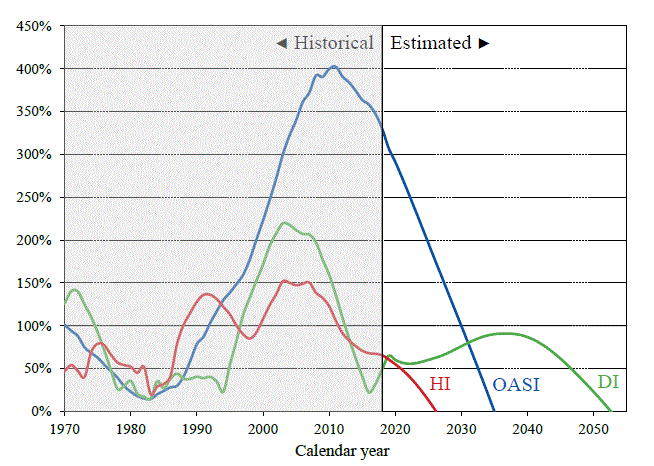 | |
| Trust Funds Ratio -- Asset Reserves As Percentage Of Annual Cost |
The CRFB was formed by the late Pete Peterson, who spent a good part of his fortune campaigning against Social Security. This website displays the sort of tilt that one might expect. It uses the euphemism "Slow Benefit Growth" for dramatic cuts in benefits. The website projects that investing part of the Social Security trust funds into stocks and bonds would solve 22% of the long term funding problem. Sure, if you make assumptions that cannot be proven and you ignore the risks involved. While diverting trust fund assets to stocks and bonds remains a Wall Street pipe dream, otherwise even the right wing has pretty much given up on the idea. This website also includes a proposal that would absolutely gut Social Security disability that almost no one even on the right is calling for. On the other hand, the website ignores serious proposals for devoting estate tax revenues to the Social Security trust funds. Billionaires don't want anyone even thinking about estate taxes.
Still, it's a useful introduction to the issues involved.


